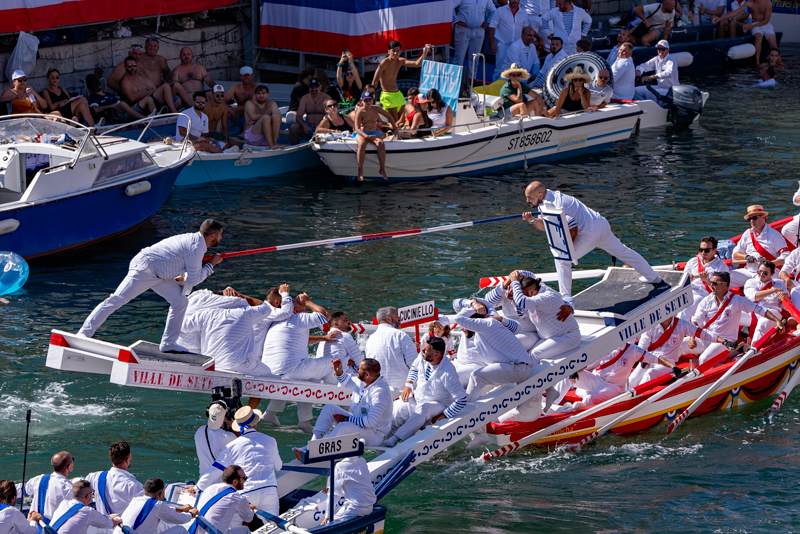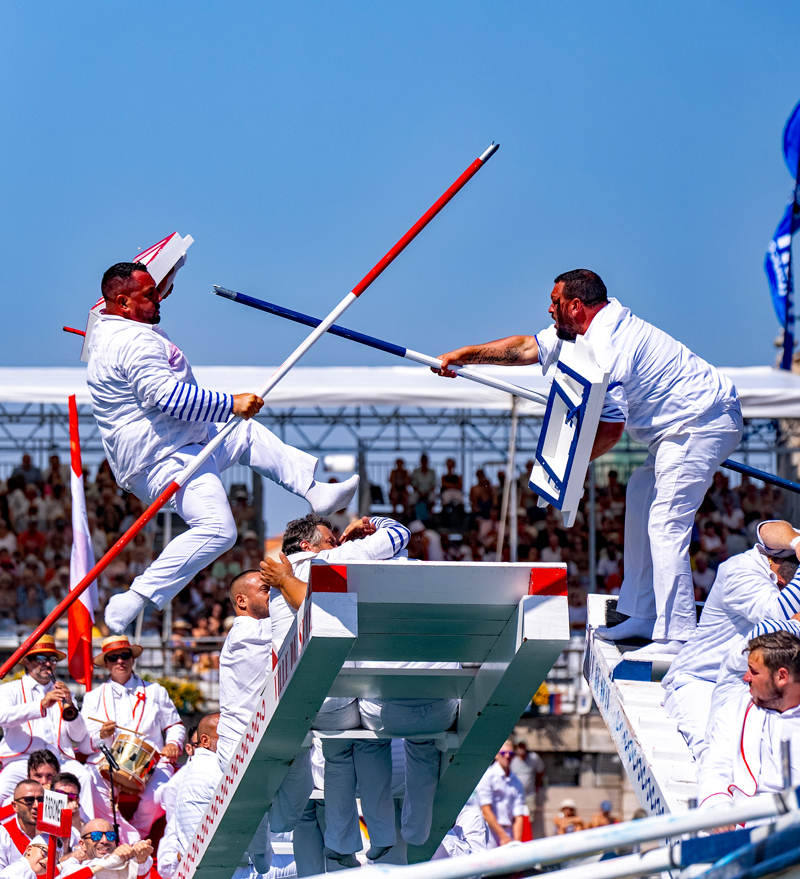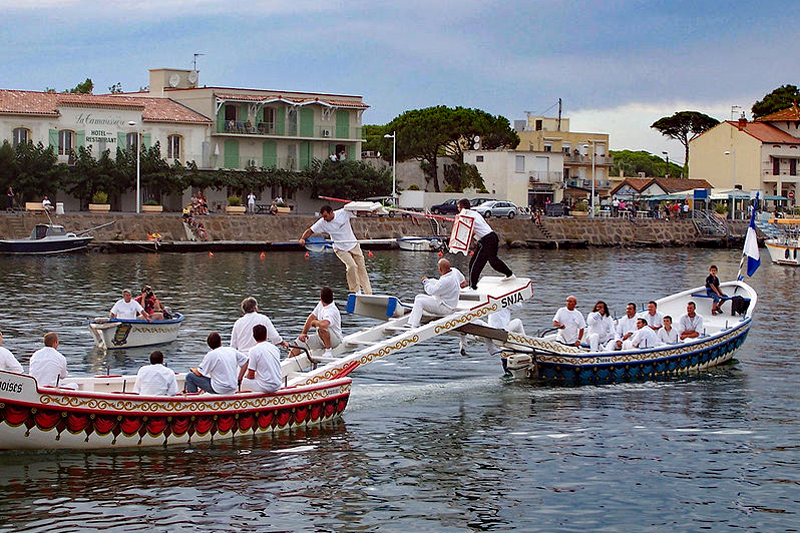Barging in France: Canal du Midi
Water Jousting – La Joute Nautique
Water jousting (la joute nautique) is a tradition that dates back as far as Egyptian times. Relief paintings on tomb walls depict the activity as far back as 2300 BC. The sport continued throughout the Middle Ages, primarily in France, where tournaments were staged for kings and queens and at local festivals. It has been a national pastime for many residents in the South of France for centuries.

Modern-day games are governed by the French Federation of Nautical Jousting and Rescue. This 19th-century organization was originally established for skilled lifeboat operators to aid in rescue during times of flood. The group now oversees water jousting on a national level by maintaining the time-honored rules which vary across the regions around Provence, Paris, Lyon, and Alsace.
The Saint Louis Festival in Sète (a town in the south of France between Toulouse and Marseille) is an annual event that has taken place since the port was built in 1666. Saint Louis is the patron saint of Sète. Teams practice in the canal from June to September. The competition is held for five days during the festival in August. Brass bands play, jousters fight, and people line the Canal Royal to watch the fun. It's a great spectator sport, especially while sipping a local beverage. Activities, shows, waterfront bars, sports tournaments, and fireworks also add to the exceptional atmosphere that reigns in Sète during this week.
During the Festival of Saint Louis, the region's premiere water jousters converge on Sète from ports up and down the coast to compete for the prestigious Gold Cup Championship. The jousting tournament is split into various weight and age classes. Those under the age of 21, for example, compete in the junior competition, while the heavyweight class draws men and women weighing more than 88 kg (195 pounds).

A match between two rowing boats, one red and one blue, are each propelled by 10 rowers and have a raised ladder with a platform (tintaine) at the stern that extends off the boat about 10 feet (3m) above the water. On the ladder sit six jousters all dressed in white and on the bow are two musicians that set the pace for the rowers by playing a tune called the "la peña" on a traditional Languedoc oboe and drum.
The jouster, standing on the tintaine, carries a 2-foot shield (pavois) and a 9-foot (2.8m) lance with which to knock the opponent into the water. Jousters knocked into the water are retrieved by men in rowboats who pull out their shields and lances in mock fighting before allowing the jouster in the boat. Whoever manages to stay atop the tintaine after an engagement is declared the winner, and each competitor has just one chance. When a jouster is knocked into the water, they are replaced by a new competitor.
The winners of the heavyweight title have their names engraved on a shield that is displayed in the Paul Vallery Art Museum in Sete.

There are other notable water jousting festivals in port towns along the south of France, including L'Estaque, Cassis, Martigues, La Ciotat, and L'Isle-sur-la-Sorgue.
Learn more about the Canal du Midi
- The Canal du Midi: An Overview
- The Canal du Midi: Towns & Villages
- The Canal du Midi: Best Places to Visit
- More information about the Canal du Midi
HOME > REGIONS > France > Canal du Midi > Water Jousting - La Joute Nautique
